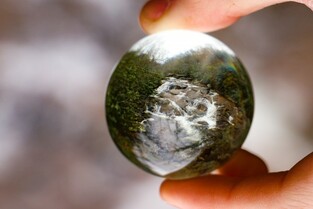|
When I was in mortuary school, I had the opportunity to assist with a couple embalmings at a nearby university hospital, UT Southwestern. There is a “willed body” program there to which people may choose to donate their bodies after death. Led into the chilly prep room, I saw the two cadavers which had been laid out on twin embalming tables. As I donned my PPE and helped to get the supplies and solution ready, I silently thanked each of them, as I did everyone I had the honor of observing post-mortem. Before their deaths, these people had made a conscious decision to donate their bodies to this hospital, and they were counting as two of the many embalming cases I still needed to complete before I could graduate. But not only were they helping me, a mere spawn of the funeral home variety, they would be helping countless medical students and patients on the eternal quest to advance medicine. To facilitate life through their deaths.
Sometimes, you hear of people saying they would like to “donate their body to science” one day. Apart from choosing a natural burial, donating your body to science (anatomical bequest) may be the best option for those who are looking for a more environmentally-friendly final disposition. It is also cost-effective. Most donation programs will, following utilization, perform cremation for free or offer a stipend. The remains can then be returned to the family. Not only easy on the environment and the wallet, whole body donation is a selfless act considered by many to be the ultimate gift. One caveat of choosing to donate your body to science is that you do not usually get to choose how it is utilized. Generally, bequeathed bodies are used for educational purposes, and they are often embalmed (sometimes with help from students or apprentices). You may wish that your body be used to find a cure for some rare disease or cancer, but it’s more likely that it will be chosen as a practice palette for surgical med students. But no matter how your body is used, you can be sure that it will be a gift of monumental importance to the advancement of medicine and science as a whole. You are choosing to take a lasting part in something that could potentially save the life of someone else, while curbing harm to the earth at the same time. Another eco-friendly option there is to consider is whole body donation to a “body farm.” The picture that pops into your mind is probably close enough to the real thing! At a body farm, cadavers are arranged outside against varying elements of weather, air exposure, animal contact, etc. Scientists study the stages of decomposition in these bodies to learn more about the timing and properties of each stage. This information can be monumentally useful to crime scene investigators as well as to students of forensic anthropology. There is one such location in Texas, Freeman Ranch Body Farm at Texas State’s Forensic Anthropology Research Facility in San Marcos. If you or someone you love is considering whole body donation in Texas, this website is a great place to start for more information: https://www.donatelifetexas.org/learn-more/resources-links/whole-body-donation/ -Aubrey
2 Comments
|
Archives
May 2024
Categories
All
|
Proudly powered by Weebly


 RSS Feed
RSS Feed
